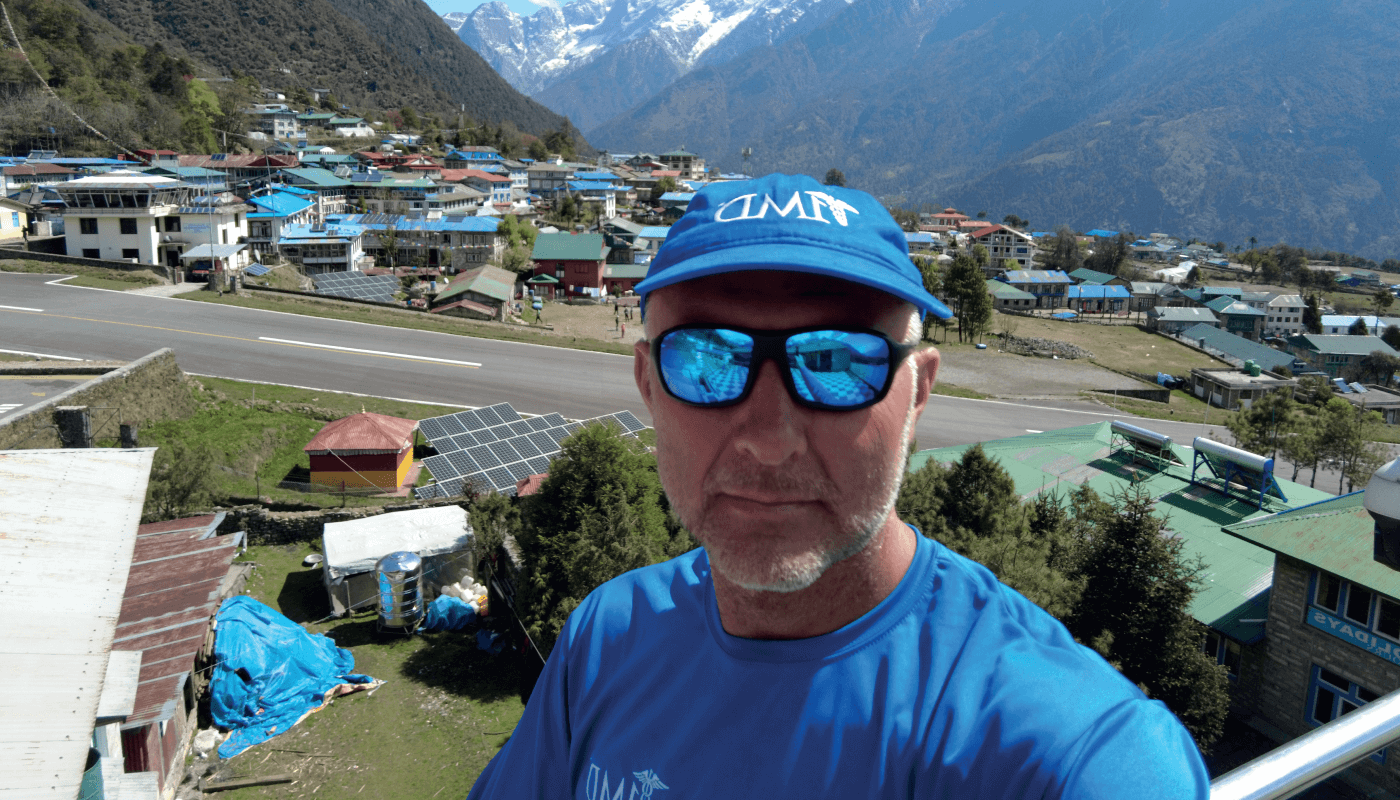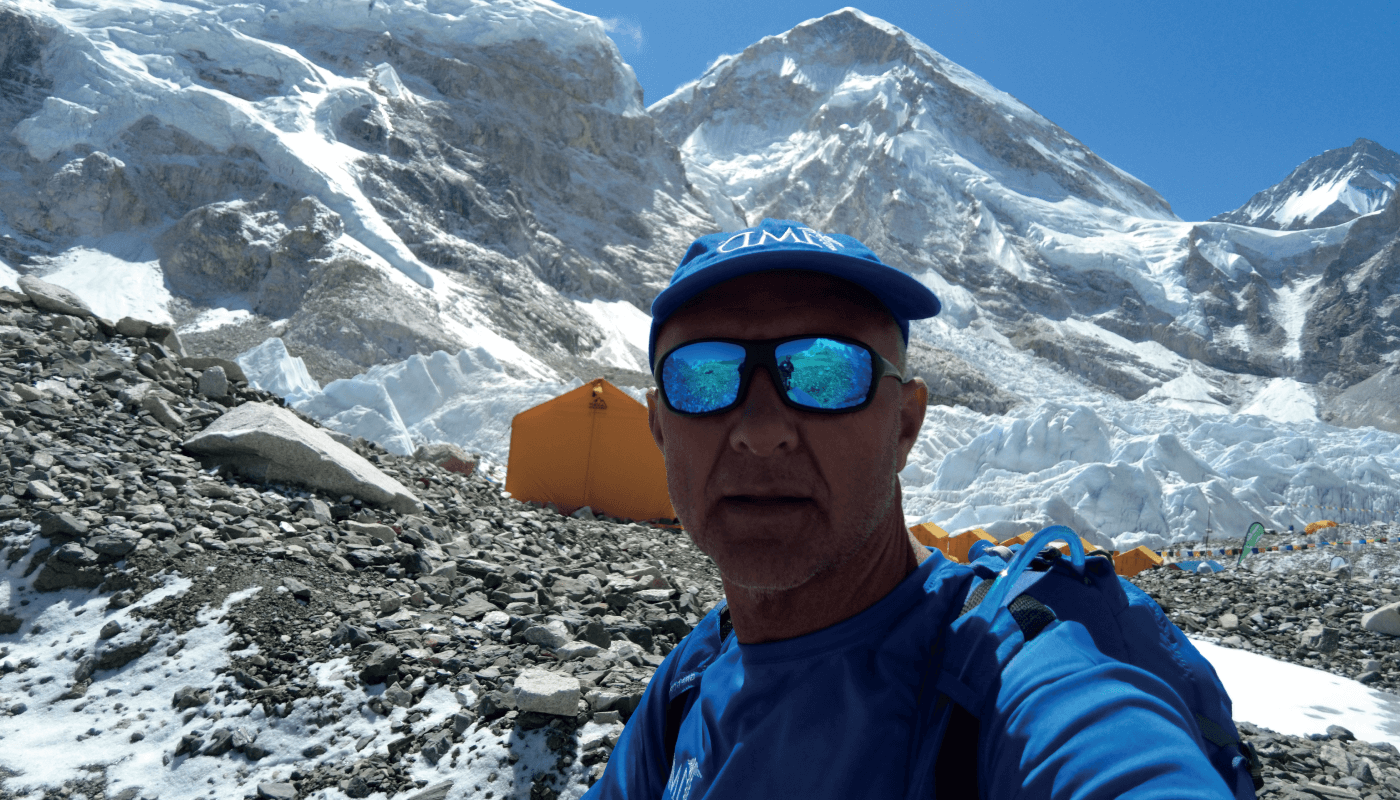
With Simon Prosser
Does the name Summits4Sight sound familiar to you? If it does, it might be because a foundation of this name has been making some noise recently, with more and more people within (and beyond) the ophthalmic community becoming aware of its goals. The man behind it, Simon Prosser, has had the vision of Summits4Sight in his head for a long time and, over the past few months, he has been making it a reality by climbing four of the highest mountains in the world – Lobuche, Putha Hiunchuli, Manaslu, Everest – all with a view to improving the lives of people with vision loss caused by AMD. But where did the idea come from, what is involved, and what are Prosser’s plans for the future of Summits4Sight?
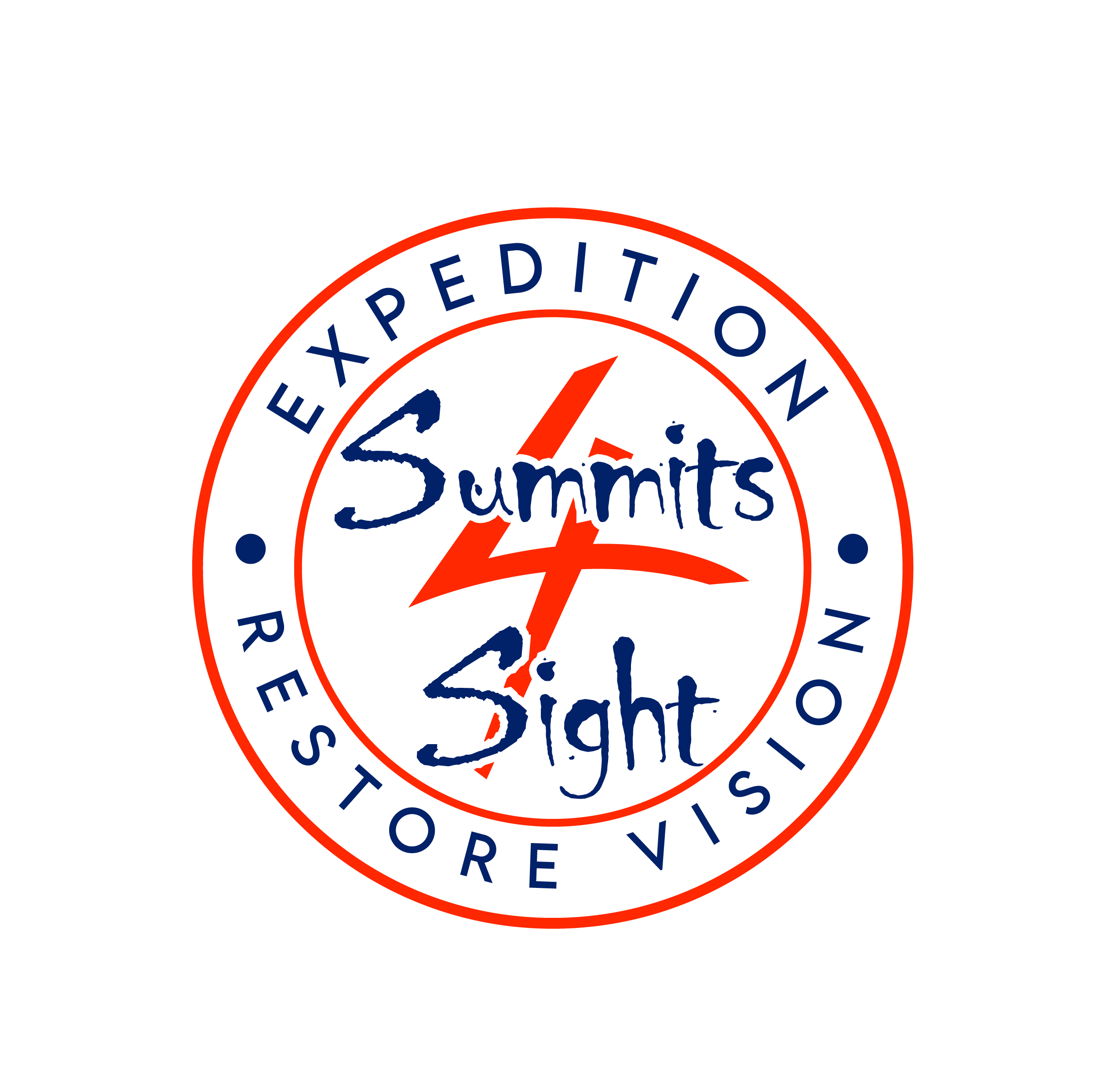
The beginnings
Originally from the UK, Simon Prosser spent his formative years in Germany before moving back to Britain to work as an application engineer for an automotive business. After a few more career changes, he was offered the opportunity to enter the ophthalmic field, working for Synergetics (now part of the Bausch + Lomb group). After successfully setting up Synergetics’ European office and building its business, he began working for DORC – Dutch Ophthalmic Research Center International – in Germany, where he spearheaded the company’s US operations in Dallas and worked in South America during the company’s sale to Montagu. After a stint at Vitreq, Prosser felt that the time had come for him to follow his true passions. He began working for Eye Tech, a company developing eye-tracking systems for people with disabilities, where he met Michael Freeman, the CEO and Founder of Prosser’s current company, Ocutrx.
At Ocutrx, he became involved in a project using a wearable augmented reality (AR) device to help people with severe central vision loss due to AMD. Freeman, whose father had suffered from AMD at a time when no treatment was available, was inspired to develop new capabilities for people with the condition. He sought Prosser out for his experience with eye-tracking systems and retinal surgery and asked for his help in bringing the AR vision aid to market and designing a surgical platform.
Because Prosser already hoped to found a nonprofit that would fundraise money to help people by climbing peaks, making Ocutrx’s AR technology available to as many AMD sufferers as possible seemed like the perfect cause to support. He became the company’s Global Director, working on developing its surgical platform, and is also working on developing Summits4Sight to distribute the Ocutrx platform widely to people who need it.
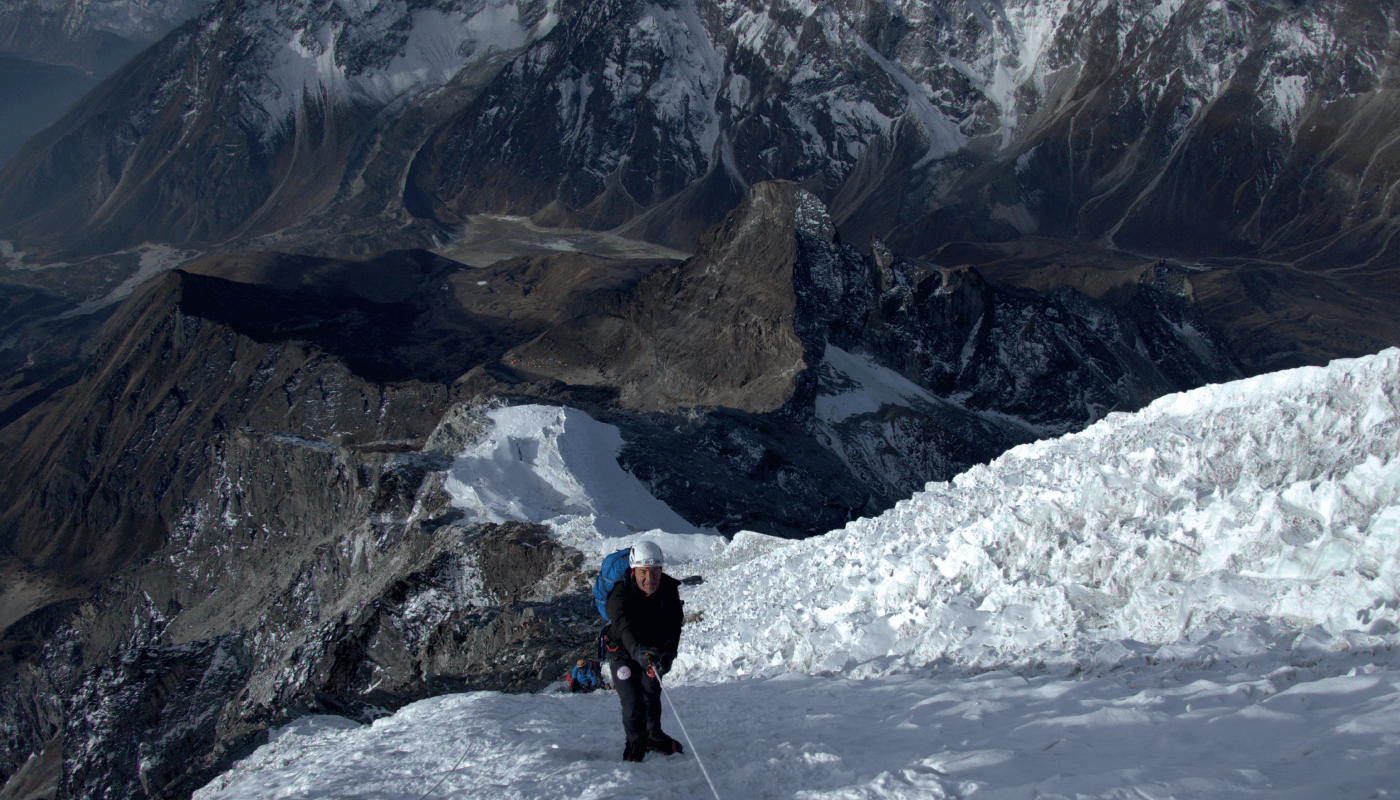
The cause
Prosser began to look into “giving back” and setting up a charitable foundation a while ago, and, over the months and years, the idea took shape in his head. Although many organizations and foundations focused on funding retina research, few focused directly on patients and improving their quality of life in the short term. Technologies exist to support quality of life for patients with vision loss, but they are often not commercially available – and, when they are, they are expensive and rarely covered by insurance.
Prosser saw an opportunity to bring together existing low-vision centers and groups to develop selection criteria for people who would benefit from using Ocutrx’s technology Ocutrx at no cost. This is still work in progress, and for now, Prosser is focusing on raising awareness and funds to purchase the needed technology from interested, relevant vendors – including Ocutrx – at production cost to maximize its future reach and availability. The idea is to fund quality-of-life solutions that low-vision centers and groups can distribute among their members according to need.
The fundraising
Although many companies have already donated, Prosser is looking for the ophthalmic industry’s wide support. His network, built up over 20 years or more, includes many physicians and leading industry figures. What’s more, some automotive and engineering companies he worked with at the beginning of his career are also involved in supporting the foundation. With powerful allies behind him, Prosser’s initial goal of raising US$1 million seems well within reach even in the first several months of the fundraising efforts. This could help hundreds of people, with many more potentially supported as the foundation grows.
For now, Prosser and Summits4Sight face an uphill climb – both literally, with daily workouts and weekly climbing sessions, and figuratively, in terms of the legal and administrative issues all nonprofits face. Though the job would be easier with extra paid help, Prosser is determined to go it alone as long as possible to maximize the fundraising total. The four climbs are already fully funded and Prosser has made sure that funds are in place to begin distributing the Ocutrx device to AMD groups in the fourth quarter of 2021.
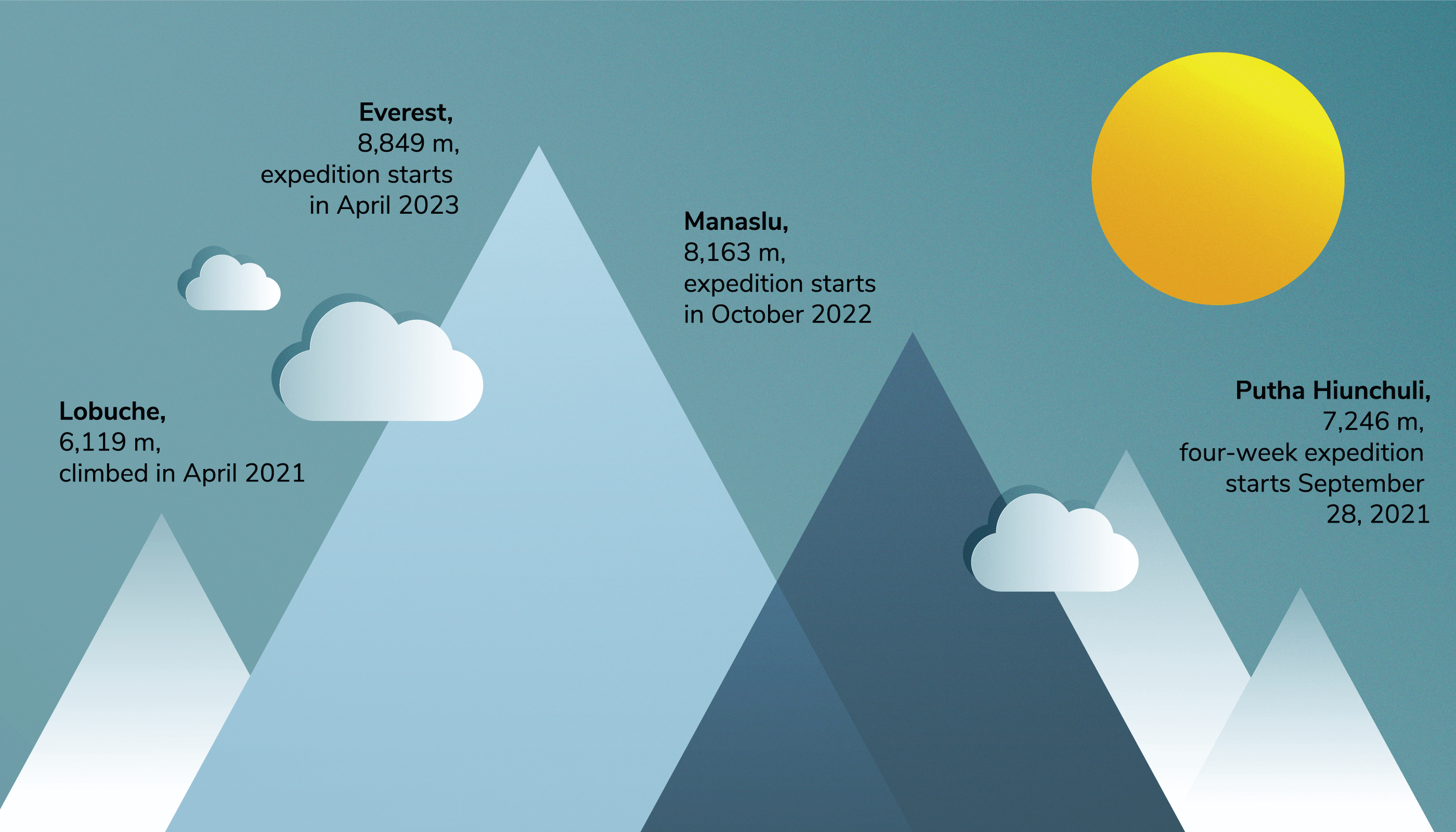
The preparations
Prosser’s ambitious Summits4Sight plan means that, when all four peaks are summited, he will have climbed twice the height that he has ever climbed before – and he has already done his fair share. As the mountain heights increase, so do the demands and dangers of the climbs.
Prosser first came in contact with rock and mountain climbing as a young child, although he didn’t enjoy it at first. He then became a semi-professional skier and fell in love with mountains and hiking. Over the last decade, traveling with work has allowed him to explore mountains in different parts of the world, from Europe to South America, in his free time. As a result, he had a few close calls, and has become accustomed to pushing his limits.
To develop his Summits4Sight plan, he got in touch with the International Mountain Guides (IMG), who helped him come up with an appropriate training schedule and advised him on staggering the climbs to bring his lofty goals within reach. As he points out, he has never been a professional alpinist and has spent most of his life in an office or an OR, so this project is well out of his comfort zone and requires a lot of preparation.
In September 2020, Prosser embarked on a strict training and diet regimen. He has been very active throughout his life – in addition to skiing, he is a keen diver and a bodybuilder, so he already understood nutrition, appropriate training, and the discipline required. He typically trains three to four hours a day, shared between treadmills, cross-trainers, stairs, and bicycles. When he’s not on the machines, he’s training in the mountains in Arizona, Colorado, or Switzerland. The pandemic’s lockdowns and quarantines have occasionally put a spanner in the works – and Prosser, who only takes one day a week off training, gets anxious if he misses any more – but they have also allowed him to focus on training during the months at home without the feeling of missing out on other things.
The first climb
Following this intense training (fortunately accomplished without injury) Prosser made his first trip to Nepal in April 2021 to climb Lobuche. He was prepared to quarantine for 10 days upon arrival, but the requirement was dropped 24 hours beforehand, allowing him to keep his fitness levels up while waiting to begin the climb. He made it to the base camp three days ahead of schedule and didn’t experience any altitude sickness – a success he ascribes to his training in high peaks of Arizona. Because the weather window was coming to an end and a storm was on its way, it was the last opportunity of the season to reach the summit. On April 21, at 7:30 am, after a record ascent time, Prosser and his team reached the summit of Lobuche. He says, “It was a fantastic experience. I wanted to prove to myself that I could live up to the expectations of all the people who have supported me, trusted me, and made this climb happen, so to get to the top without a struggle meant a lot to me. On the way down, I saw people using Lobuche as training ahead of climbing Everest and, even though they were struggling, they were still planning to attempt the world’s highest peak in a few weeks’ time – something that shocked me. I don’t consider it to be a responsible approach.” It took the team around 3.5 hours to get down to the high camp, where they planned to rest for a few hours and “charge their batteries.” But the guides, seeing a rapid change in the weather, insisted on coming down much faster. Prosser continues, “Immediately after leaving the camp, snow started coming in from all directions. I was wearing all my hard-shell protective clothing, with just a little gap for my eyes, but the snow still found its way in and crammed into my eyes. I had no clue where the path was and there were huge drops on either side. Luckily, with the Sherpa guides’ experience, we made our way down, although it took us two days to make the descent.” Having gained five days on his original schedule, Prosser then had to wait for his return flight from Kathmandu, with the added difficulty of needing PCR test results before flying home at a time when the city was going into a new lockdown.
But Prosser’s motivation remains high; most corporate sponsors for the climbs have guaranteed a base sponsorship, but are reserving bonus sponsorships for reaching the summits – meaning that not completing the climbs will cost the foundation money, which will ultimately limit the number of people Summits4Sight can help. This pressure keeps Prosser going, both in his training and during the climbs, and ensures that he plans things well. Although the risks at high mountain altitudes are always substantial, they can be mitigated with good preparation, teamwork, and knowing how hard one can safely push oneself. Prosser refers to his natural apprehension as “healthy fear.” At any point during a climb, many things can go wrong, and the threat to life is constantly present. Only a naïve person would go into such circumstances with no fear – and appropriate caution could prevent a deadly mistake.
But Prosser says that the biggest challenge for him is not the climbs; it is getting enough people on board to make Summits4Sight exceed everyone’s expectations. The foundation is off to a great start, but he hopes to see even greater success in the future.
What’s next?
For now, between Arizona and Switzerland, Prosser is busy training for his next scheduled climb – Putha Hiunchuli, for which the expedition will begin in late September. For this, he and his guide decided to assemble their own team, rather than attach themselves to an existing one. This means having to organize and fund the logistics – including booking and paying for eight yaks! The normal time to climb the peak is between 31 and 34 days, but Prosser hopes to do it in 24 days, breaking another speed record.
Once he’s done all four planned climbs (see the graph below), will that be all for Prosser’s work on Summits4Sight? It seems unlikely; he already has fresh ideas, such as going to Antarctica or perhaps writing a book about his experiences, to raise even more funds. It seems obvious that, after this chapter, Summits4Sight will carry on helping AMD patients with vision loss – but, as Prosser comments, he is focusing on his current goals and not looking too far ahead. After all, his current plan is ambitious in both climbing scope and financial targets, and it needs his full attention to come to fruition.
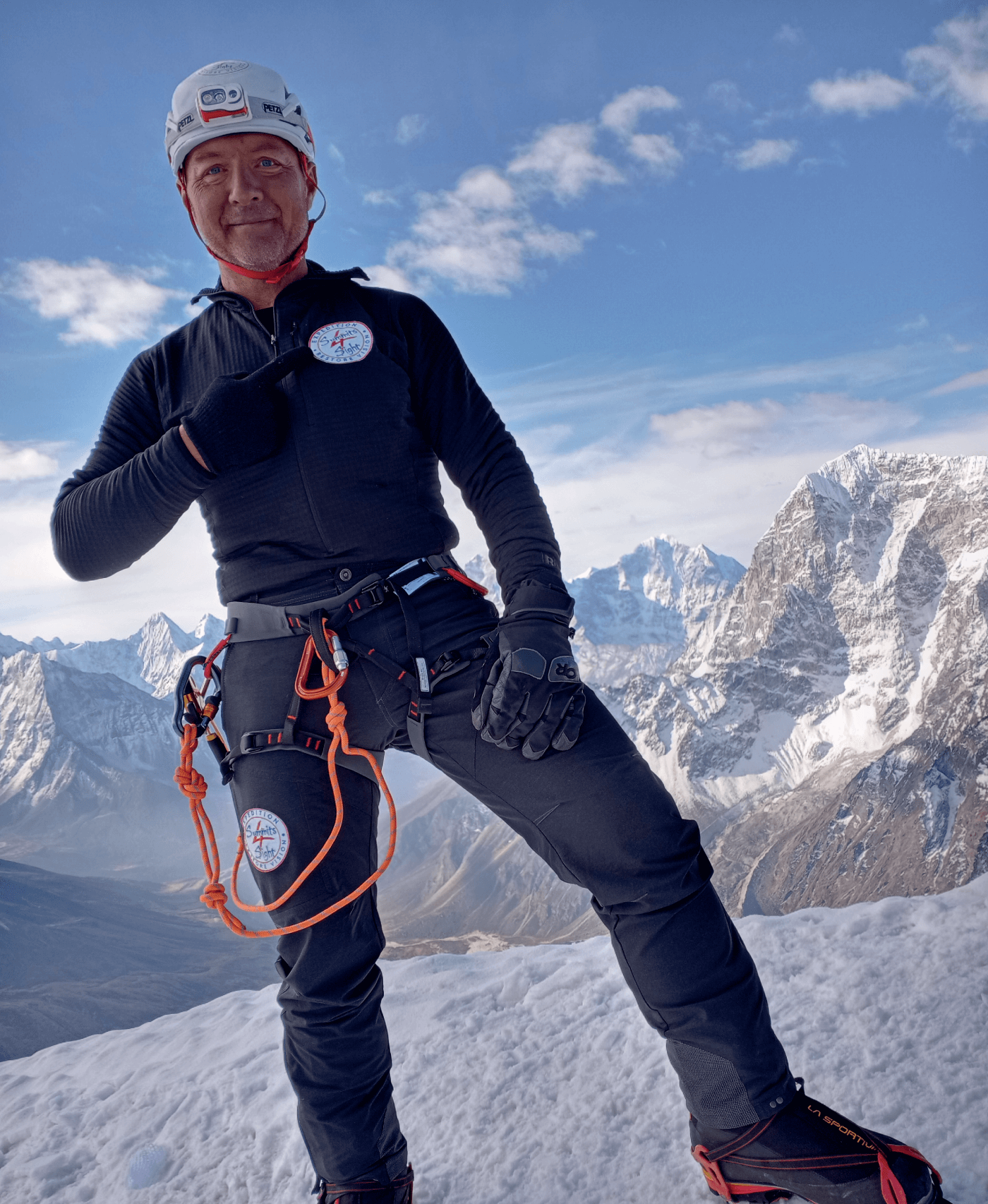
Visit the Summits4Sight website: summits4sight.org
